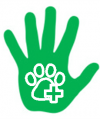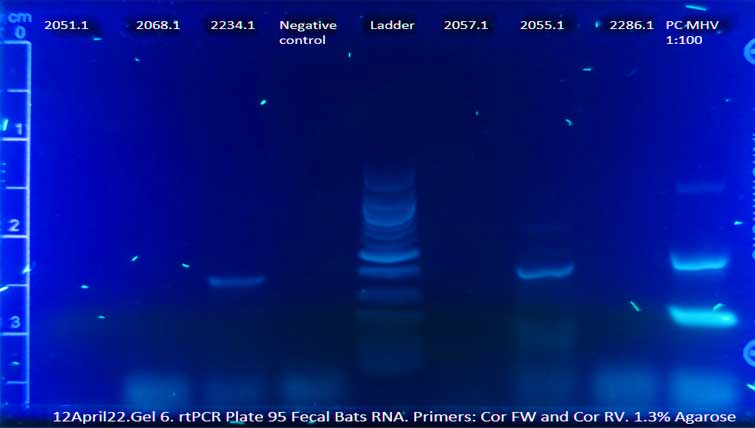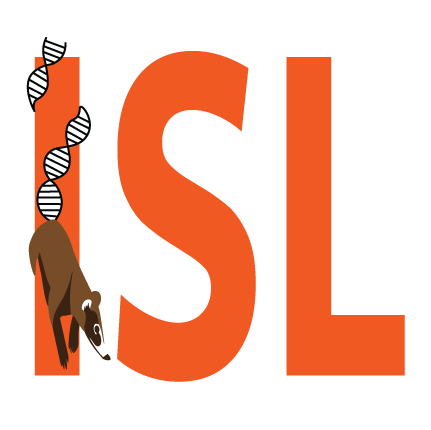DECENTRALIZED WILDLIFE DISEASE SURVEILLANCE
A Major Frontier in One Health

WHAT is disease surveillance?
In public discourse, DISEASE is most frequently attributed to a parasite or pathogen, some sort of infectious agent like coronavirus, HIV, influenza virus, West Nile Virus, fungus, bacteria, mites, nematodes. However, parasites and pathogens don’t always cause disease. Many people have asymptomatic infection of SARS-COV-2, which has greatly complicated infection prevention work. Or, Helicobacter pylori is a type of gram negative bacteria that resides in the stomach and SOMETIMES causes gastritis or ulcers. Disease is frequently caused by non-biotic factors too. For example nutrition and sleep deficiency can manifest in diseases – observable symptoms related to chemical, physical and behavioral deviations from what is considered normal. Thus, wildlife disease surveillance involves collecting samples and testing for parasitic and pathogenic agents in the wild (a priority of many global pandemic preparedness and prevention efforts), but that’s not all it requires. In totality, disease surveillance involves regular monitoring of populations or even communities of wildlife for signs/symptoms of disease, and then investigating their potential causes
WHY conduct disease surveillance?
1) The altruistic reason: humans are just one of many species on the planet, but our population growth and use of natural resources is disproportionately large. It is our responsibility to ensure the survival of other species to the extent that we are able. Wildlife disease surveillance is how we know if we are achieving goals of sustainable land use, preservation of natural habitat, and containment of materials and chemicals that are noxious to the environment.
2) The selfish reason: we rely on wildlife populations and communities to provide essential ecosystem services. Imagine if we had to hand pollinate all of our crops, produce all of our fresh water and oxygen, or farm everything we consume. Wildlife communities maintain habitats that provide essential ecosystem services. Wildlife disease surveillance gives us peace of mind that ecosystem services are being maintained, and affords us warning and opportunities to correct our impact on the environment when disease is observed.
3) The One Health reason: wildlife populations, unlike human populations, tightly depend on local environmental conditions. The human-experience is buffered by many variables extrinsic to the local environment (medicine, imported goods and services, foreign aid). Disease in wildlife is a proxy, or warning, for the effects of climate change, novel infectious agents, and environmental toxicants or pollutants that are direct or indirectly detrimental to humans also. For example, we have been known to release excessive hormone/hormone derivatives, carcinogens, and pesticides, into the environment and food we eat. Wildlife disease surveillance can alert us to dangers, sometimes more quickly than the public health sector does.
HOW is disease surveillance carried out?
Bearing in mind that disease surveillance is more than just searching for potentially pathogenic agents, the In Situ Laboratory strives to monitor wildlife disease in several key ways:
In nature, animals co-exist with parasites and pathogens. A few types include blood parasites such as Trypanosoma spp. (causative agent of Chagas disease), Plasmodium spp. (causative agent of malaria), or gastrointestinal parasites such as Cryptosporidium (can cause diarrhea), Strongyloides (can cause strongyloidiasis), or viruses such as herpesvirus, coronavirus, and flavivirus, and also bacterial pathogens such as mycobacteria (causative agent of tuberculosis). The ISL aims to support regular collection and analysis of samples collected from wildlife populations (using nonlethal, and were possible, non-invasive techniques), and then use cost effective genetic laboratory methods to detect and characterize natural parasite and pathogen communities. This data enable us to establish a baseline of prevalence, incidence, and richness of parasites and pathogens. Over years of monitoring, these baselines become highly informative for ecological change and disease onset, since we can correlate infection data with population change or symptoms we see in individual animals.
Our gut microbiome is how scientists refer to the bacterial community that reside in our intestinal tract. Research on the gut microbiome has been an explosive area of scientific research, especially since the advent of next generation sequencing techniques. The microbiome is intricately linked to animal wellbeing. Individuals with different diets and specific diseases have distinct microbiomes, and it is now becoming common to treat sick humans and animals with microbiome content from healthy individuals. The ISL plans to study wildlife gut microbiome from wildlife populations over time using regularly non-invasively collected fecal samples. These data will be correlated with animal health status, development, and changes in diet that may be induced by anthropogenic disturbances or climate change.
A frequently espoused explanation for human-wildlife conflict and also pathogen spillover, is human encroachment on natural habitat. When humans move into an area the land is frequently converted for agricultural, industrial production or developed. In all cases, wildlife are displaced, however, human encroachment causes additional changes in animal behavior; daily activity patterns, sleep sites, foraging locations, or competition with domestic animals. This can precipitate a change in diet, that alters the microbiome, which also impacts parasite and pathogen assemblages. Monitoring diet with molecular metabarcoding techniques from non-invasively collected fecal samples provides insight into changes in wildlife ecology that can result in wildlife disease.
Finally, the most basic types of data that are relevant to disease surveillance come from simple monitoring of wildlife populations over space and time (i.e. long-term). Systematic counting of individuals, combined with observations of mortality and reproduction, can alert us us to rapid or gradual changes in wildlife populations that may be caused by some underlying disease, which might be strongly correlated with diet, microbiome, or parasite/pathogen data, but is otherwise not readily visible based on external appearances. The ISL initiative is advocating for population level monitoring strategies using various techniques that span as many taxonomic categories as possible (some are discussed in the conservation technology page). Over the past decades there have been a number of longitudinal studies showing declines in insect and vertebrate populations (WWF Live Planet Index). Better data collection at the local level increases awareness and garners greater, more sustainable initiative.
No really, how? SPECIFICALLY!
Everything we are doing, as it is standardized, becomes public here on this website or in linked online repositories such as protocols.io and github.
These repositories include information on:
- Data Management: we use a mix of open source and commercial software to support collection and sample management
- Biological sample collection: How to make and how to use different sample preservatives
- Molecular laboratory protocols: Tissue specific extractions methods, PCR, rtPCR, Sequence Library Prep
- Wildlife surveillance data toolkit: We use a mix of open-source and home-made bioinformatic tools to support this work.
Most efforts start with population data and sample collection efforts from wildlife populations in collaboration with local partners (local partners include in-country stakeholders but also international groups that have relevant, on-the-ground research efforts). More information will be available on each ISL HUB page, as they are ready.

Collected samples are transferred to one or more ISL laboratories in the region. The capacity and scale of each laboratory varies, but all are designed to perform safe and reliable nucleic acid extraction, quantitation, PCR and rtPCR amplification, amplicon visualization, sequence library prep, and portable sequencing. Three of the four disease surveillance foci described above follow this same workflow, only the inputs change slightly. For parasite and pathogen testing we use consensus PCR that pick up broad parasite and pathogen families, such as the RNA-dependent RNA-polymerase gene for RNA virus screening or a mitochondrial DNA cytochrome B gene marker that is specific to nematodes. For gut bacteria characterization we use the well-established 16S rRNA gene. For diet we use established 18S rRNA gene markers.
We are happy to share more, but since we don’t know SPECIFICALLY what part of our work you are interested in, please feel free to reach out through our CONTACT US form.
